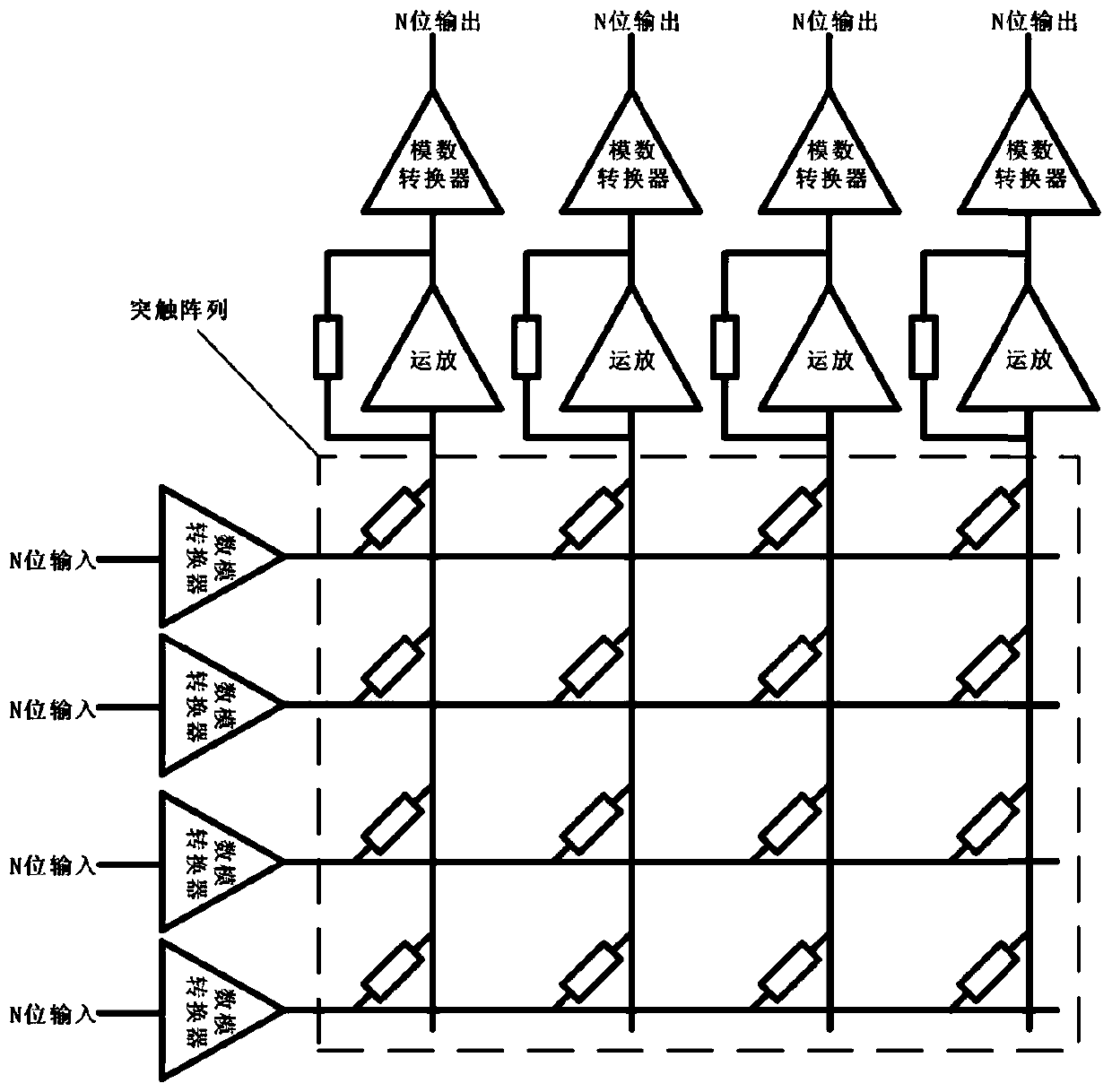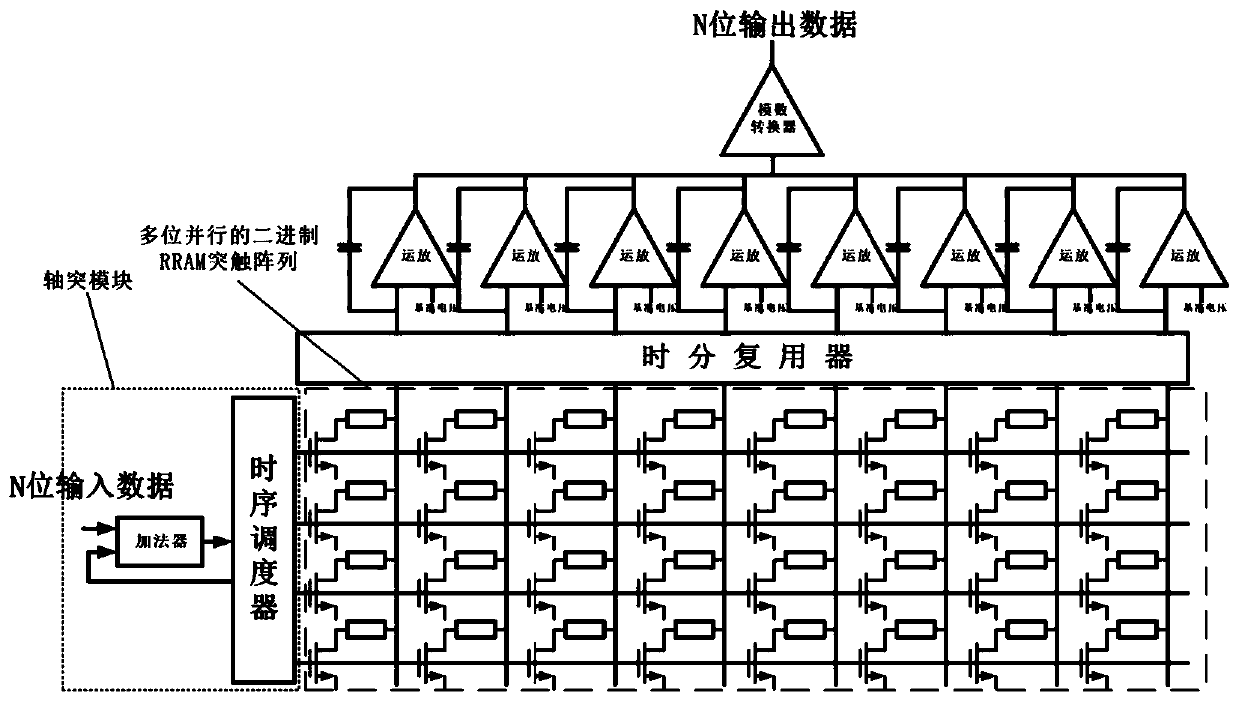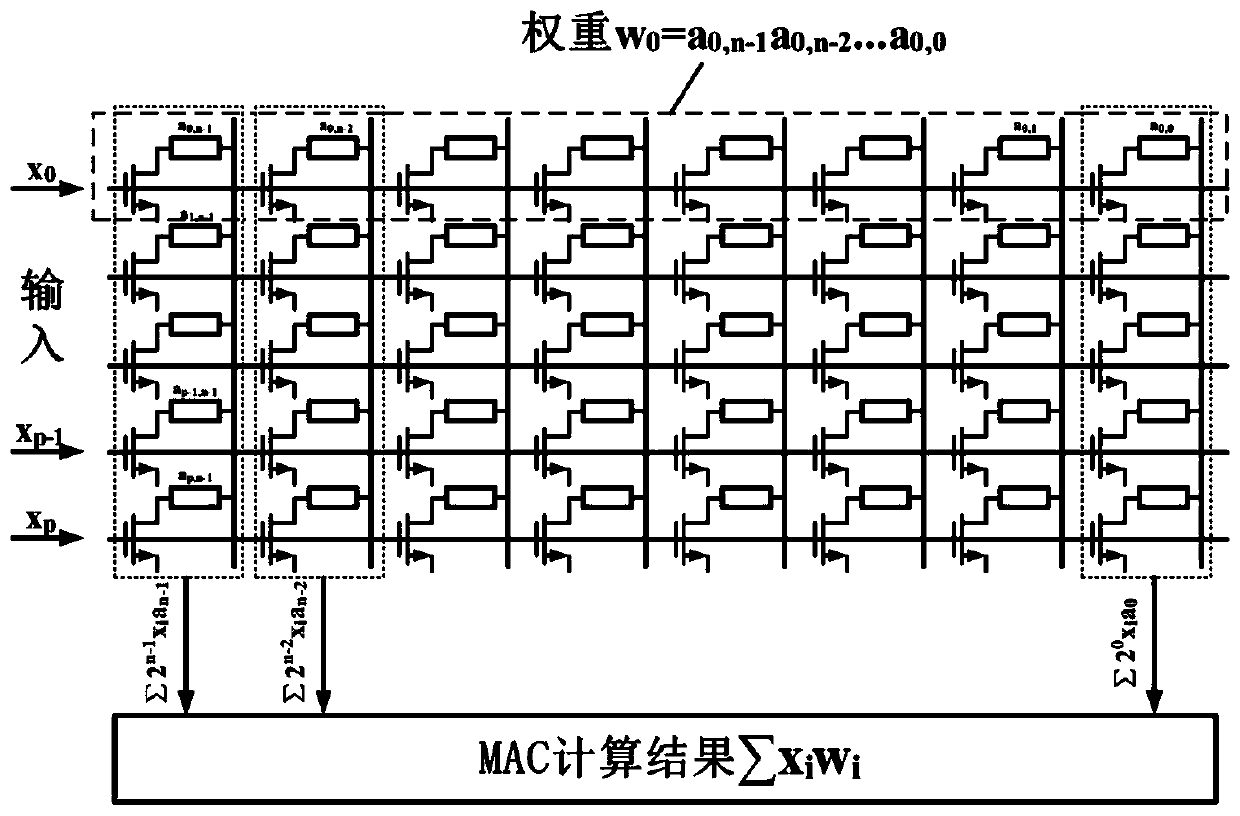Neuromorphic calculation circuit based on multi-bit parallel binary synaptic array
A computing circuit and binary technology, applied in biological neural network models, electrical components, electrical signal transmission systems, etc., can solve the problems of low weight quantization accuracy and activation value quantization accuracy, deep neural network performance loss, unfavorable edge computing equipment applications, etc. problem, to achieve the effect of reducing power consumption and area, high precision and power consumption, and low power consumption
- Summary
- Abstract
- Description
- Claims
- Application Information
AI Technical Summary
Problems solved by technology
Method used
Image
Examples
Embodiment Construction
[0019] The specific implementation manners of the present invention will be further described in detail below in conjunction with the accompanying drawings.
[0020] image 3 It is the neural synapse array structure adopted by the present invention. N binary RRAMs are used to simulate a synapse, so an N-bit fixed-point weight can be expressed as w=a n-1 a n-2 …a 0 , further the dendrite output can be expressed as:
[0021] y=∑x i w i =∑2 n-1 a i,n-1 x i +…+∑2 1 a i,1 x i +∑2 0 a i,0 x i (1)
[0022] Figure 5 and Figure 6 It is the specific calculation circuit integration principle and integration system. Each integrator consists of an integrating op amp, C n Capacitance, C f -C n Capacitor and S1, S2, S3, S4 switches, the specific connection relationship is shown in the figure. Using 256 parallel inputs, each input data is quantized into N-bit fixed points, and enters the integration circuit sequentially from low to high, in other words, A 0,0 A 1,0 …...
PUM
 Login to View More
Login to View More Abstract
Description
Claims
Application Information
 Login to View More
Login to View More - R&D
- Intellectual Property
- Life Sciences
- Materials
- Tech Scout
- Unparalleled Data Quality
- Higher Quality Content
- 60% Fewer Hallucinations
Browse by: Latest US Patents, China's latest patents, Technical Efficacy Thesaurus, Application Domain, Technology Topic, Popular Technical Reports.
© 2025 PatSnap. All rights reserved.Legal|Privacy policy|Modern Slavery Act Transparency Statement|Sitemap|About US| Contact US: help@patsnap.com



